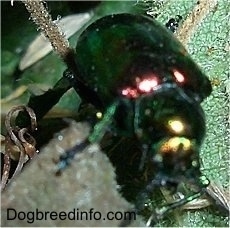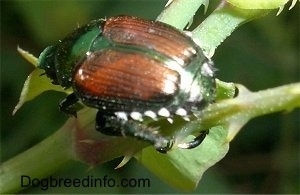
Japanese beetle (Popillia Japonica)
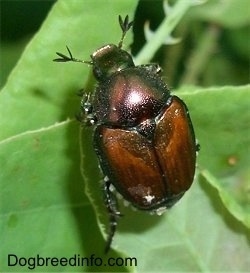
Japanese beetle (Popillia Japonica)
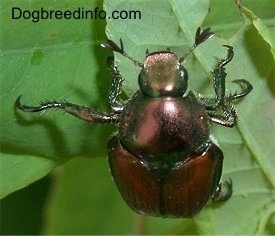
Japanese beetle (Popillia Japonica)
Scarabaeidae
Coleptera
18-29 mm
The Japanese Beetle is a very destructive beetle. It was imported from Asia. They lay their eggs in soil and grassy areas. The larvae then feed on the root of the plants or grass. By midsummer to early fall adults will emerge. Japanese beetles do great damage to plants in the rose family. They will damage both the leaves and the flowers. To control the damage from these beetles, large areas must be treated or the beetles will just re-infest from the surrounding areas. Japanese beetles are prone to a bacterial disease known as Milky Disease.
Various parasitic wasps and other flies also help to control the Japanese beetle population.
The beetle is an invertebrate, which means it does not have a backbone.
Beetles can lift over 850 times their own body weight, which would be equivalent to you trying to lift 20 cars at one time!
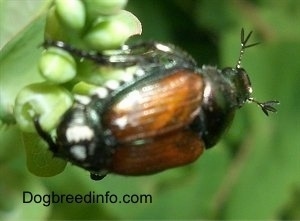
Japanese beetle (Popillia Japonica)
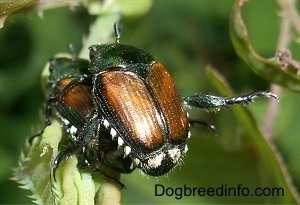
Beetles mating
Japanese beetle (Popillia Japonica)
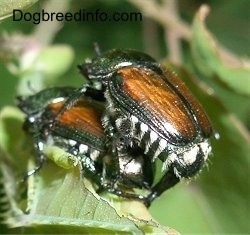
Beetles mating
Japanese beetle (Popillia Japonica)
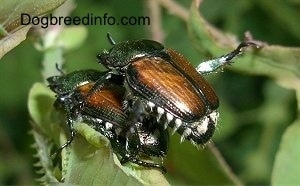
Beetles mating
Japanese beetle (Popillia Japonica)

Beetles mating
Japanese beetle (Popillia Japonica)
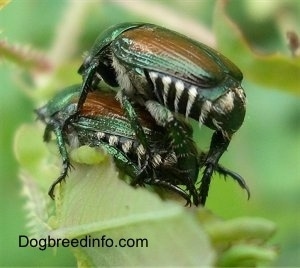
Beetles mating
Japanese beetle (Popillia Japonica)
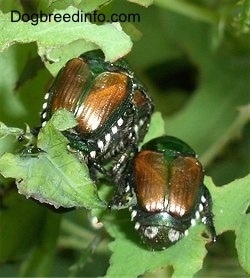
Beetles mating
Japanese beetle (Popillia Japonica)
